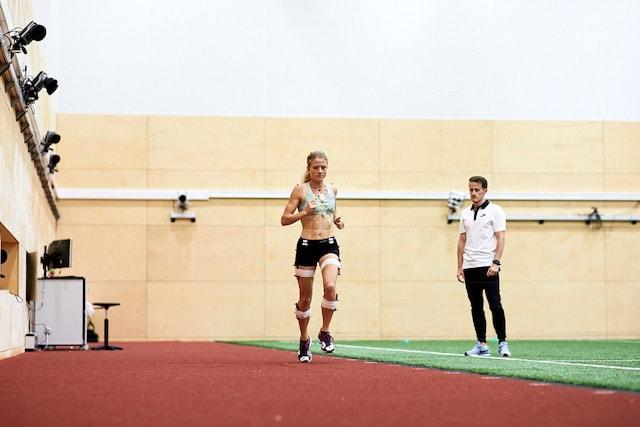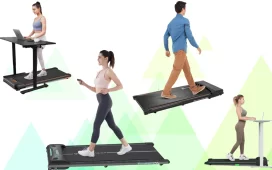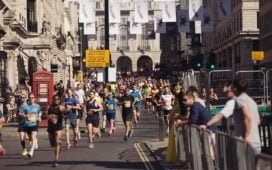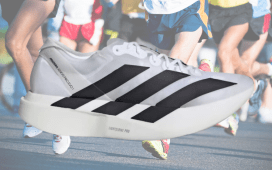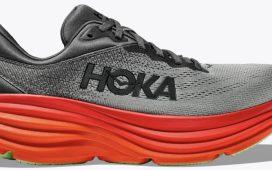Chris Bramah is a Sports Physiotherapist who leads the Running Clinic at The Manchester Institute of Health & Performance, operated by HCA Healthcare UK, where he delivers 3D running gait analysis assessments to help runners with their running technique. He is also a researcher from the University of Salford where his research has focused on the biomechanical characteristics of elite runners and the biomechanical contributions to running injuries.

Here Chris gives us at Jogger.co.uk his top tips on how to improve your running technique…
A person’s running technique is an often overlooked part of training. However, evidence is increasing to suggest that your technique can have an influence on both your economy and risk of injury. So focusing on how we run should be as important as the training we are doing. But what aspects of our technique should we consider?
Here are my top five tips for ensuring good running form:
The optimal forward lean
Forward lean is something I hear a lot of confusion around. Should we run upright? Or should we lean forward?
When it comes to forward lean, it’s about getting the right balance. Too much may cause us to over stride and limit our efficiency. Whereas running too upright can limit the ability to push through the glutes.
The optimal forward lean is around 3 to 10 degrees which is too difficult for us to judge with the naked eye. One way to ensure we have the right amount of forward lean is by using this simple cue:
The solution:
In standing, take note of where you feel the pressure through your feet. Now, very subtly lean your whole body forwards so the pressure under your feet moves to the front half of your foot. This should feel more like a “drift forwards” rather than a true lean. This gives us the balance between too much forward lean and too little, meaning that we can keep moving forwards without having to over stride.
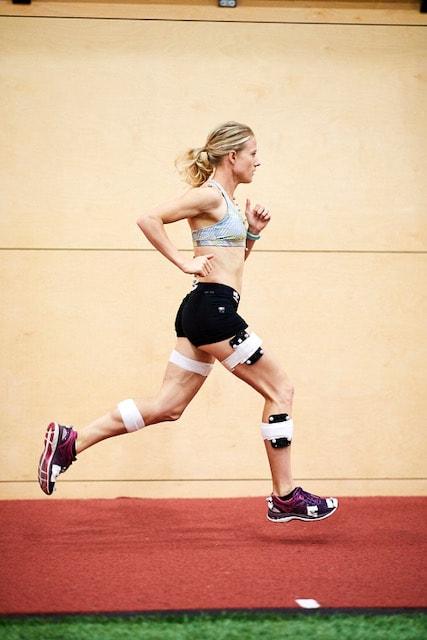
Get your foot underneath your hips!
Getting the right positioning of your lower leg can help to prevent injury and improve running efficiency. The classic over stride is when we reach too far in front of ourselves with an extended knee and elevated foot. This can create large breaking forces when we land which will not only slow us down, but also increase our risk of developing an injury.
The solution:
The ideal position is to have the shin vertical and foot close to your body. Aim to land with the foot underneath your hips when you run. Now it’s important to note that we will never truly be able to get our foot directly under our hips, as some breaking forces are necessary for storing and returning energy as we run. But by aiming to get the foot closer to our centre of mass this should prevent us from excessive overreaching and excessive breaking. The end result should be less breaking and more forward movement!
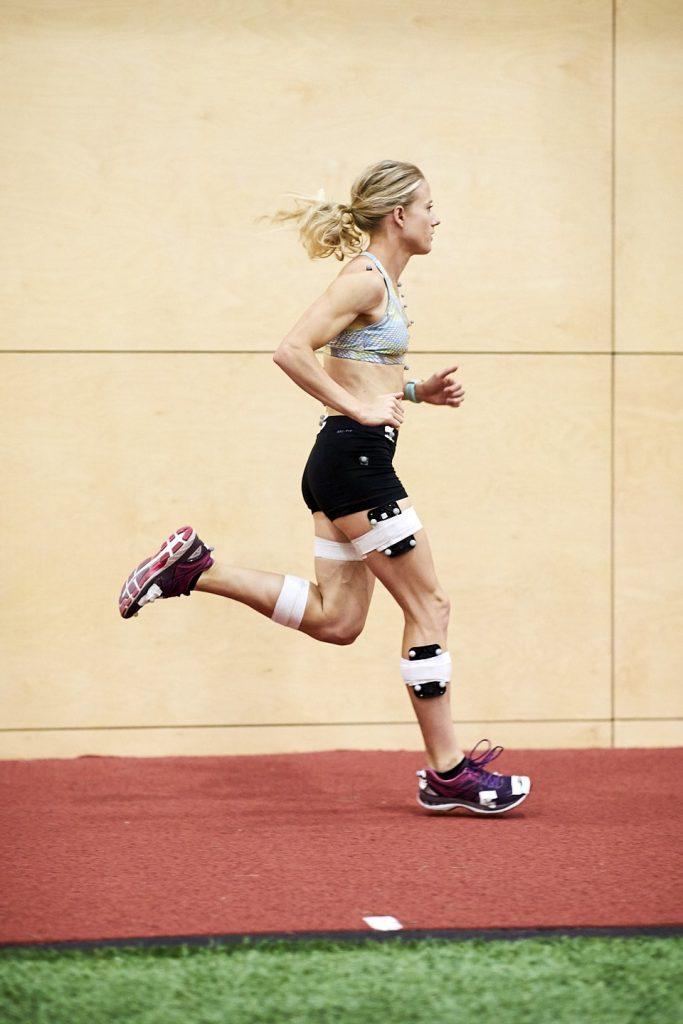
Short ground contact
Ground contact is the amount of time your foot is on the ground. When looking at elite runners we tend to find they spend less time on the floor and more time in the air moving forwards. Recent evidence would suggest that this ability to spring off the floor may help to improve our running economy making us more efficient and faster.
The solution:
In order to reduce the time you spend on the floor there are two steps. First, make sure your foot is underneath your hips as you land, if your foot is underneath your hips then there is less time required to transfer your body over your foot to begin the next step. Second, focus on keeping a high leg turn over, or cadence (discussed below), this will help to give you that all important spring in your step.
Pelvis and hip control
Pelvis and hip control is probably one of the most important aspects of good running technique. If the pelvis drops too much to one side and the hip and knee come across the midline of our body, then this can increase the stress throughout our entire lower limbs. The consequence is potentially an increased risk of injury.
The solution:
What we like to see is a level pelvis with the thigh and knee pointing forwards. This can be hard to correct and can take a combination of strengthening and technique retraining. But current research would suggest there may be a simple cue that could help, increasing your cadence!
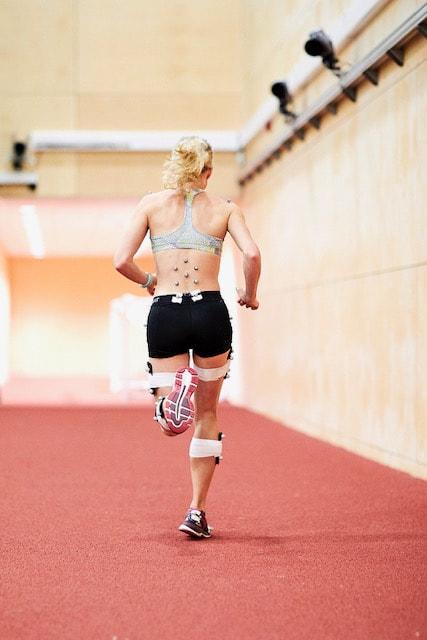
Cadence
Cadence is often referred to as step rate or stride rate and is essentially the number of steps we take each minute. Subtle increases in cadence has been shown to have a positive effect on a number of aspects of running form. Beneficial effects can include a foot position closer to our centre of mass, lower breaking forces, shorter ground contact times and improved hip and pelvis control. Essentially, increasing your cadence could help improve all the aspects of running form covered in this article.
However it is important to know that there is no magic number to aim for. A lot of runners talk about the 180 steps per minute mark. However the ideal cadence is individual and can depend on a factors such as your height and speed you run at.
The solution:
If you are aiming to improve aspects of your running technique such as those we have discussed above, then aim to increasing your cadence by 5 to 10%.
To find your current cadence count the number of steps you take on one foot during 30 seconds of running. Now multiply this number by 4. This will give you your total number of steps per minute. If you are aiming for a 5% increase, multiple your current step rate by 1.05, if you are aiming for a 10% increase, multiple your current step rate by 1.1. This will give you the step rate to aim for.
Adopting a good running technique can help to reduce the stress placed on our bodies and ensure we are optimising the miles we cover. However, it’s important to remember that technique is one of many factors that can influence injury and performance. Strength training, nutrition and the optimal balance of running and recovery are also important factors to consider. We are all unique and what works for one person, may not always work for you. Finally, when integrating the technique tips in this article make sure you do it gradually. This will allow time for your body to adapt to the adjustments to your running.
If you’re unsure on what your running technique is, it wouldn’t hurt to get a gait analysis assessment done. If you’re not convinced, read our blogs ‘Is gait analysis worth it?‘ and ‘Why gait analysis works!‘ for more information.

